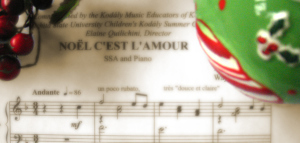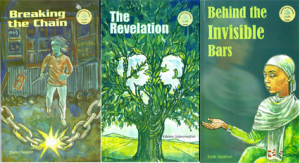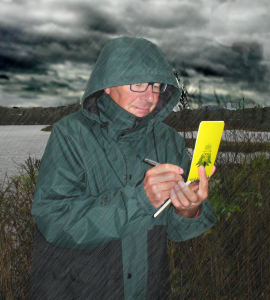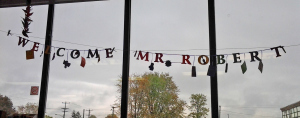Robert Rayner's Blog, page 7
January 9, 2015
An Embarrassing Confession
Basking during the last few weeks in that frustrating lull between sending off the manuscript of a new story and waiting for the editorial response – and worrying about what it will say – and not wanting to start something new because afraid of ending up with two stories overlapping in various stages of draft and rewrite (been there, done that, nearly drove me nuts, afraid of characters popping up in the wrong story), I fell to thinking about romance, because both stories I’m currently working on contain elements of that fabled state, one a fairly prosaic affair, the other of the over-the-top variety.
I like – as in am a sucker to an embarrassing degree for – the latter variety, that is, Romance with a capital R, of the blatant, shameless, outrageous, self-indulgent, over-the-top variety.
And this in turn set me thinking about my favourite over-the-top romances in various genres. Here’s a selection, in no particular order:
Movies:
Les Parapluies de Cherbourg (Jacques Demy, Michel Legrand)
Truly Madly Deeply (Anthony Minghella)
Moulin Rouge (Baz Luhrmann)
Novels:
The Subterraneans (Jack Kerouac)
Strait is the Gate (Andre Gide)
Les Miserables (Victor Hugo)
Wuthering Heights (Emily Bronte)
Poetry:
Autumn Journal (Louis MacNeice)
The Captain’s Verses (Pablo Neruda)
Drama:
Cyrano de Bergerac (Edmond Rostand)
Dr. Who (David Tennant incarnation) – his final goodbye to Rose on Bad Wolf Bay
Music
Drive All Night (Bruce Springsteen)
Adagietto from Symphony No. 5 (Gustav Mahler)
La Boheme (Giacomo Puccini)
So how d’you feel about Romance? Hands up if you, too, are an inveterate sucker for it.
And what would be on your list of all-time favorite over-the-top romances in stories, poetry, movies and music?

December 22, 2014
Kids 1. Cynicism 0.
The car park in the neighbouring mall has been full for over an hour. Cars are prowling the lanes looking for a space and overflowing into the curling club parking lot further down the road.
People of all ages stream along the sidewalks and traffic is backed up as they cross the road, all making for the auditorium.
Inside, with curtain time still an hour away, there is already standing room only. Some seats have been claimed for two hours or more.
What’s going on? Big win bingo? A revival meeting? A royal visit? A surprise appearance by T. Swift or Drake or J. Bieber or M. Bublé or all four?
Nope. Just the elementary school Christmas concert.
I have the pleasure and privilege of playing for a couple of classes. I’m early and take a stroll through the school. The kids – button shirts and ties and dresses and lots of ruffles and frills and hair teased into curls and ringlets – are strewn all over the floor and perched on desks because their chairs have been seconded for the audience in the gym-turned-auditorium. All the doors are welcomingly open, security measures (Visitors Please Report to the Office! Alarm Will Sound If This Door is Opened!) happily neglected for the day, and parents and grandparents and friends and high school kids wander through the hallways and classrooms.
Until … showtime!
In the auditorium, with all seats taken, people stand two or three deep at the sides and the back. The first class is on stage and the next already lined up in the hallway ready to move in as the first files out. Tension crackles the air.
Applause still sounding, the first performers stagger from the stage, giggling and gasping and pretend collapsing against one another. “I couldn’t breathe.” “I felt sick to my stomach.” “I thought I was going to pee my pants.” (It wouldn’t be the first time it’s happened.)
Next class is already on stage. A girl faints and a teacher’s assistant gently gathers her up and carries her out. Right on cue, the third class is marching down the hallway, ready for the ordeal.
And thus it continues. The same old songs, some spiced up with a new take, a few new ones.
Easy to be cynical and jaded about all this after so many school Christmas concerts.
But for the kids, when it’s all over, and you didn’t mess up, at least not too badly – what inimitable rush of adrenalin and excitement and exhilaration and achievement, remembering and savouring the buzz and hum and settling silence of the audience as the curtains opened, the heat seeking missile gaze of your family searching you out, the smiles, the discreet waves, the adoring faces, incandescent with admiration, like you’re a movie star – how can it ever be topped? Christmas Day will surely be an anticlimax now.
After the concert, by unspoken tradition, the mass exodus for a de facto afternoon off, not an official afternoon off, and discouraged by the school district authorities, but right now who cares about them, and anyway how would you ever settle down to work after such excitement and brilliance and adulation?
And who knows when they’ll come again?

December 10, 2014
And the winners are …
It was exciting this week to receive copies of the three winning books in the 2013 Burt Award for Young Adult Literature in Ethiopia. Congratulations to the winners, and to everyone at CODE-Ethiopia for their administration of the award and for seeing the winning books through to publication.
I had the privilege of sitting on the jury, first to establish a shortlist, and then to select the winners from a stack of entries. We met for three days at the Rosemary Hotel in Bishoftu (formerly Debra Zeyit), a town about 30 miles from Addis Ababa, situated among seven crater lakes at an elevation of 6,300 ft.
I was on the jury again this year, to choose the 2014 winners, but this time took part at a distance, emailing my responses and thoughts about the manuscripts while the jury deliberated, a system that wasn’t ideal, of course, but still worked surprisingly well (with the added advantage for the jury of not having to listen to me).
The 2013 winners are: The Revelation, by Kibrom Gebremedhin, Behind the Invisible Bars, by Eyob Getahun, and Breaking the Chain, by Daniel Negash.
In The Revelation an earnest and ambitious university student struggles against the obstacles of a broken family and uncaring fellow students. Kibrom Gebremedhin, a poet, is a senior corporate communications expert in Addis Ababa.
Breaking the Chain takes its young adult readers on a wild and exciting adventure in which a young woman takes on human traffickers, corruption, and organ harvesting at the same time as she struggles with conflict within her family. Daniel Negash, an accountant, has eight children’s books, written in the Amharic language, in publication.
In Behind the Invisible Bars two struggling young people of Addis Ababa, a blind girl and a petty thief, embark on a mission that takes them into a dark and dangerous world of greed and kidnapping. Eyob Getahun has published three books in Amharic, including Yaltenore Lijnet (Robbed Childhood), which is based on a true story.
CODE (the Canadian Organisation for Development through Education) supports literacy and learning in Canada and around the world. Its international programmes encourage development through education through support to libraries, and professional development for teachers, as well as national and local book publishing in 20 languages.

December 2, 2014
Sad Luddite
Came across this provocative stat the other day: Ninety per cent of books bought now are bought in digital form.
Ninety per cent!
The stat was quoted by a publisher. A publisher that publishes only e-books.
A-ha!
My first thought: That statistic does not correspond with the reality I perceive, of book buying friends, and line ups of book toting customers at the book store, and people staggering from the library with books falling from their arms.
But then N. reminded me: It’s the kids and the young adults, i.e. the book buyers of the future, who slant the stat towards e-books.
So – are we heading for a future of digital books only, the shelves at the book stores and the libraries doomed to emptiness (maybe book stores and libraries themselves doomed to extinction)?
Nothing against e-books. I see their advantages … the world-wide distribution within seconds of ‘publication’ (breathtaking, isn’t it?), and the saving of trees, and the instant reception of a book you want to own (no trip to the book store, no waiting for Amazon to deliver, no going on a waiting list at the library), their easy portability (you can travel with a whole library), no danger from having a book crash into your face when falling asleep while reading in bed.
Still – just hate to see ‘real’ books – with their feel and their smell and their ease of riffling through and finding well-loved passages and being able to look back and ahead to check on something you may have missed (yes, I know you can do that with an e-book, but it really doesn’t seem so easy) – just hate to see them disappear completely.
You detect a note of Ludditism? Dead right.
Am I alone, pathetically shouting into a real-book-less future, “Hang on. I don’t think this is such a good idea”?
Probably.
Sadly.

November 24, 2014
Na��ve?
I know I���m technologically and digital-age na��ve compared with, say, most eight year olds of my acquaintance, but still I can���t quite believe the following stat, which I share not out of any desire for self-aggrandisement, but out of a sense of wonder at the shrinking of the world:
This inconsequential blog, which I started a year or so ago after I twice discovered publishers who declared on their websites that they were not interested in seeing any work by a writer who didn���t have a blog (don���t know what to think of that ��� how ���bout you?), is now read, or has been read, in the following countries: Canada, United States, England, Scotland, Ethiopia, Russian Federation, Hong Kong, Spain, Luxembourg, Jersey, Australia, Macao, Republic of Korea, Greece, Philippines, Germany, Switzerland, Denmark, Columbia, France.
Which renders me – you’ll be happy to know – speechless.

Naïve?
I know I’m technologically and digital-age naïve compared with, say, most eight year olds of my acquaintance, but still I can’t quite believe the following stat, which I share not out of any desire for self-aggrandisement, but out of a sense of wonder at the shrinking of the world:
This inconsequential blog, which I started a year or so ago after I twice discovered publishers who declared on their websites that they were not interested in seeing any work by a writer who didn’t have a blog (don’t know what to think of that – how ‘bout you?), is now read, or has been read, in the following countries: Canada, United States, England, Scotland, Ethiopia, Russian Federation, Hong Kong, Spain, Luxembourg, Jersey, Australia, Macao, Republic of Korea, Greece, Philippines, Germany, Switzerland, Denmark, Columbia, France.
Which renders me – you’ll be happy to know – speechless.

November 14, 2014
Failed. Again.
Cyril Connolly, the English writer, posited the Ten Year Test for books, suggesting that if a book is still being read ten years after being published, then it’s achieved longevity and, he seems to imply, will probably be read forever. (I’m paraphrasing loosely, and with apologies if I’m misinterpreting in doing so.)
But being read for more than ten years, or for ever … by who?
If it means being read by a kind of general reading population, that disqualifies a book that’s still being read beyond ten years by only a few readers, and takes us dangerously close to lists like The 100 Most Worthy Books, and Books a Person Must Read in Order to be Considered Educated, and school ‘approved reading lists’ (happily becoming a thing of the past, I think), and, worst of all in the preening smug arrogance of the people who compile them, the ‘Canons of Great Literature’.
I have no illusions, as a writer, about passing the Ten Year Test (but then I’ve never been very good at passing any kind of test), although I have five books ten or more years old (young adult fiction Walker’s Runners, Miss Little’s Losers, Just for Kicks, and Suspended, and adult fiction The Ragged Believers). I don’t know if any of them are still being read, although I often see the YA stories in schools and libraries, and every now and then a young reader will mention one or other of them, and I see The Ragged Believers in libraries, although of course that doesn’t mean it’s being taken out, and recently I came across a copy in a second hand book store, which might mean it was read at least once, or that the owner bought it, read the first few pages, thought, What a load of rubbish, and traded it in at the second hand book store for something better.
All of this is a preamble to my bestowing upon you (or inflicting upon you, depending on how you look at it) my personal list of books that have passed the Ten Year Test, books that resonate with me, that I read over and over again. (This is novels only. Non-fiction and poetry and drama might be another list.)
Of course as soon as you make a list like this you’re revealing far more than your reading tastes. You’re also baring your background, your personal quirks, and something of your psychological makeup, and in doing so you invite a quick psychoanalysis, not to mention scorn, amusement, derision, incredulity, etc., at the contents of the list. (What kind of a nutbar thinks that’s a good book?)
Still – here it is, in no particular order, with the invitation to append your own list (so I can get my own back and psychoanalyse you):
The Cricket Match, Hugh de Selincourt
Lonesome Dove, Larry McMurtry
On the Road, Jack Kerouac
The Sportswriter, Richard Ford
All the Pretty Horses, Cormac McCarthy
Les Miserables, Victor Hugo
Strait Is the Gate, Andre Gide
Eventide, Kent Haruf
Wuthering Heights, Emily Bronte
Over to you.


November 7, 2014
The Problem with Rain ��� Solved!
I know ��� you���re looking at the picture above and thinking ���
1. Is he nuts?
2. Why is the dope writing in a rainstorm?
Answers:
1. Yes.
2. Because he can.
And the reason he (that is, I) can is ��� The notebook and pen are waterproof.
They arrived this week, an out of the blue gift, in response to my whining blog of a couple of weeks ago on The Problem with Rain.
The problem is ��� was! ��� that when I���m rewriting a story, and can���t think how to fix a problem, I like to walk, because for some reason walking helps me think things through, and as I think things through I like to make notes, on a voice recorder or in a notebook, which works well ��� until it rains, and then the voice recorder makes a fizzing noise and stops, and the notebook disintegrates into a soggy, unreadable mess.
It took me some time to track down the sender of the problem solving pen and notebook (manufactured and supplied by Outdoor Shopping, of Greentown, Pennsylvania). Turned out to be (I should have known) one of my sisters, who read the blog, and knew about Outdoor Shopping (and, presumably, about the necessity sometimes of writing in the rain), and to whom I send renewed thanks, and will thank again, every time I walk and write in the rain.
All of which demonstrates ���
I have a thoughtful and generous sister (but I knew that)
There���s a solution to everything, even writing in the rain
Whining pays!
So ��� what shall I whine about next?


The Problem with Rain … Solved!
I know – you’re looking at the picture above and thinking …
1. Is he nuts?
2. Why is the dope writing in a rainstorm?
Answers:
1. Yes.
2. Because he can.
And the reason he (that is, I) can is … The notebook and pen are waterproof.
They arrived this week, an out of the blue gift, in response to my whining blog of a couple of weeks ago on The Problem with Rain.
The problem is – was! – that when I’m rewriting a story, and can’t think how to fix a problem, I like to walk, because for some reason walking helps me think things through, and as I think things through I like to make notes, on a voice recorder or in a notebook, which works well – until it rains, and then the voice recorder makes a fizzing noise and stops, and the notebook disintegrates into a soggy, unreadable mess.
It took me some time to track down the sender of the problem solving pen and notebook (manufactured and supplied by Outdoor Shopping, of Greentown, Pennsylvania). Turned out to be (I should have known) one of my sisters, who read the blog, and knew about Outdoor Shopping (and, presumably, about the necessity sometimes of writing in the rain), and to whom I send renewed thanks, and will thank again, every time I walk and write in the rain.
All of which demonstrates …
I have a thoughtful and generous sister (but I knew that)
There’s a solution to everything, even writing in the rain
Whining pays!
So – what shall I whine about next?


October 31, 2014
Let us count the perks
Walking on the riverside trail near where I live, I passed three boys, grade 5 or 6. Didn’t recognise them, but said, as you do in a small town, “Hi, guys.”
One nod.
One suspicious glance.
One mumbled: “Hi.”
Walked on.
Then, from behind me: “Hey. You’re the author!”
Looked around.
Three grinning, waving kids, who must have been in a class I’d visited recently. (Had to have been recent for the visit not to be forgotten.)
That started me thinking about the perks of writing.
Came up with …
A bit of travel … Writing has taken me all over New Brunswick, as well as to Nova Scotia, Prince Edward Island, Quebec, Newfoundland, Nunavut, Ontario, and Addis Ababa and Debra Zeit in Ethiopia.
Being able to work at your own pace – and in peace and solitude. (I say this after happily spending a big chunk of my working life in the frenzied and crowded and noisy environment of school.)
Being able to set your own deadlines, although one consequence of this is that I tend to be stricter with myself over meeting them than I used to be dealing with externally imposed deadlines. (You can always come up with an excuse for not meeting someone else’s deadline, but you can’t lie to yourself.)
Being greeted at school doors by students when you arrive to do your writers in the schools thing. (My favourite greeting: The student welcoming committee at a Toronto elementary school with a banner strung across the classroom window behind them: Welcome Mr. Robert.)
What am I forgetting?












